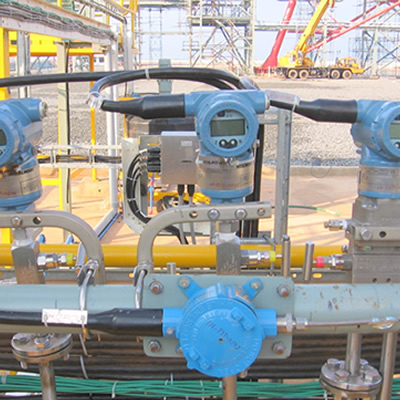
Instrumentation in Incinerator Packages
While preparing documents and drawings, such as GA, PFD and P&ID, with the control philosophy clearly defined and understood, there emerges a whole lot of instrumentation which requires some special attention. The importance of instrumentation in incinerator packages cannot be over-emphasized, particularly in the case of a system with full automation and controls. When the system is running in auto mode, it is very important that the instruments chosen function properly without any hitch. For this reason, it is necessary to choose a proven and tested set of instruments. Many industries particularly in the oil & gas field are very particular about the makes of these instruments for the above reason.
Let us now see the types of instruments and their functions:
Thermocouple: This is a temperature sensor in the incinerator’s primary chamber giving data to either the temperature controller or the PLC.
Temperature transmitter/controller: It measures the incinerator chamber and downstream equipment temperatures and transmits these to the PLC panel for effective control and display.
Monometer: This measures incinerator chamber pressure and is used in the primary chamber to enable the operator to maintain negative pressure always
Limit switch/Proximity sensor: This will automatically switch off the burner when the incinerator’s charging door is opened, so that the operator can safely load waste without any fear of exposure to the burner flame.
Pressure transmitter: It measures the incinerator chamber pressure (usually in mm WC) and this can be interlocked to an ID fan to vary the fan’s speed and maintain the required pressure in the chamber.
Differential pressure transmitter: This is used to measure difference in the pressure between two downstream equipment and show any blockage in the process.
Pressure gauge: This is a simpler manual method of knowing the pressure at different locations.
pH transmitter: For measuring the pH value of the incinerator’s scrubber water. This will enable dosing of caustic to bring the pH back to set ranges and will raise an alarm if neutralization of water is not effective even after addition of caustic. This will also be interlocked to the PLC panel.
Level transmitter: This is available in many different types, most commonly used is an ultrasonic type and this measures the fuel/water levels in the tanks and can be interlocked to the incinerator’s PLC panel. This will show the level of water/fuel in the tanks.
Flow meter/transmitter: This is used mainly in the incinerator fuel gas line to show the flow rate in m3/h and will set off an alarm in the event of low or high flow.
CEMS: The continuous emission monitoring system is used to measure, at the outlet of the incinerator chimney, values of various emissions such as SOx, NOx, SPM, HCl, etc. This is a very essential instrument considering the environmental damage that could occur when uncontrolled emissions are released to the atmosphere. This is also connected to the PLC panel. This is recommended where the incinerator system is used for biomedical waste and hazardous wastes and when the system runs continuously.
The above is a list of key instruments in incinerator packages. There can be others which, according to the control philosophy and requirements, can be provided.


